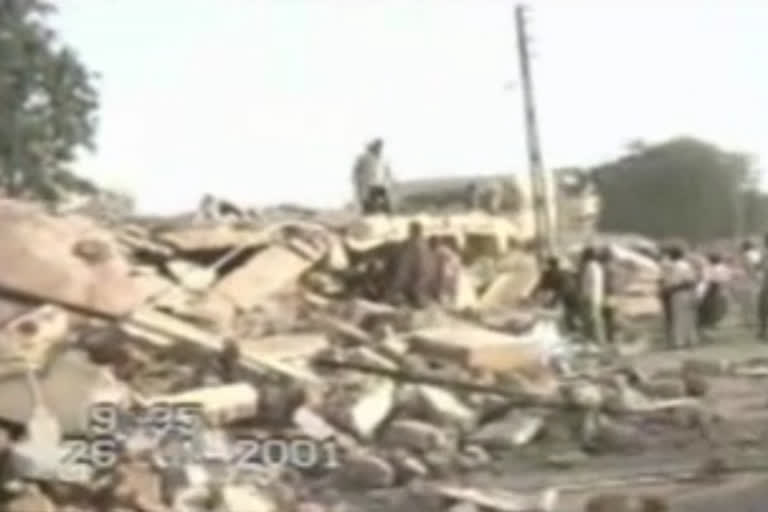Kutch (Gujarat): It was on this very day in the year 2001 that a huge earthquake razed swathes of the country's western of state Gujarat, with Kutch - a remote region in the arid borderlands of the state - being one of the worst sufferers.
The magnitude 6.9 earthquake which struck the region, left several people living on the edge of the vast desert devastated.
This was the third major earthquake, after the ones that occurred in 1819 and 1956, to have hit the state.
Although life has moved on since, the people of Kutch recall the horrid memories of that fateful day every year on January 26, a day when the entire country rejoices while observing the Republic Day.
What happened on January 26
It was on January 26, 2001, at 8:45 am in the morning that a 6.9 magnitude earthquake hit Gujarat.
Although official records suggest that the epicentre of the earthquake was Chobari village, located some 12 km away from Bhachau town in the Kutch district, the effect of the earthquake was felt as far as 700 km. It was feared that more than 20,000 (the official figure was lowered later on) people had died after being buried under the debris of collapsed buildings.
More than four lakh houses were damaged all over Gujarat.
It took years for the people of Kutch to come out of the trauma and rebuild their lives.
Some 21 districts within the 700 km radius were affected, which included 18 big cities, 182 Talukas and 7, 904 villages.
However, the most affected was Kutch district, with cities like Bhuj, Bhachau, Anjar, and Rapar almost submerged in rubble and dust.
Many lost their lives, but the ones who survived are scarred for life with the horrifying memories of January 26.
Kutch: Then and Now
Those who witnessed the devastation at the time must have thought that this would set back development by decades.
However, life moves on, and today Kutch has bounced back, with development and new vigour. The tragedy seemed to have shaken the people, and the government out of the usual lethargy.
The large scale destruction drew the attention of the world, and help poured from all directions.
The 1819 earthquake caused an 80 km-long landmass to uplift creating a sort of a dam, which prevented water of some rivers from entering Kutch, depriving the people residing in those areas of their traditional livelihood opportunities. Many had to migrate to other places.
Lakhpat city is desolated today, which is testament to that migration. In 1956 another quake led to Kutch's devastation.
The only difference between the past two earthquakes and the one which occurred in 2001 is that after the 2001 earthquake, people and the government got together to rebuild the otherwise ignored district.
Also read: Gandhiji wanted to put an end to Nehru-Patel rivalry: Irfan Habib
The then Prime Minister Atal Bihari Vajpayee’s vision to rebuild Kutch was exemplary.
Tourism in Kutch was promoted vigorously, many industries came up, new ports like Mundra and Mandavi were developed.
Tax incentives were given to set up new units, which attracted many industries to the region. About Rs, 33,394 crore was spent to rebuild Kutch, which went on to become a role model for re-development.
With more than Rs. 2 lakh crore invested in setting up energy infrastructure, Kutch now produces 10 lakh megawatts of electricity. Ports at Kutch account for 30 percent share of all sea trade of the country and Kandla has even been recognised as the best port in the country.



